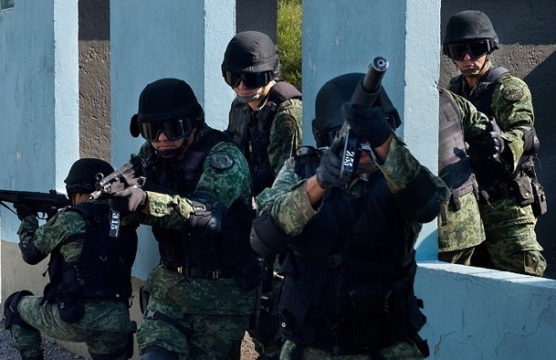IACHR Report on Citizen Security & Human Rights
Citizen security remains a top concern for most Latin American governments as crime and violence spiral out of control and cripple political and economic institutions in the region.
This article was originally published on November 25, 2004 by the Miami Herald under the title "Eradicate violence against women in Latin America."
He was an egomaniacal tyrant, and the three sisters fearlessly opposed him. Once, their family left one of his parties early and defiantly refused to apologize. He took vengeance by confiscating some of their properties and relentlessly harassing them.
On Nov. 25, 1960, the Mirabal family paid the ultimate price. On that stormy night, Rafael Leónidas Trujillo sicced his henchmen on 36-year-old Patria, 34-year-old Minerva and 26-year-old María Teresa. Their mangled bodies were left to rot in a desolate cane field.
In 1999, the United Nations proclaimed Nov. 25 ''International Day for the Elimination of Violence Against Women.'' Latin America has been a world leader in promulgating conventions on women's rights. The Inter-American Commission of Women has pioneered four agreements — on equality before the law, civil rights, political rights and gender-based violence — that were the first of their kind anywhere and have served as models for similar conventions by other international and regional organizations.
Physical and psychological abuse inflicted by family members is the most widespread violence against women. Nearly 50 percent of women in Latin America are victims of domestic abuse. In most countries, lax enforcement of legislation, infrequent prosecution and even rarer imprisonment leave women almost defenseless against their abusers. Most victims, moreover, never report their abuse or refuse to press charges if they do. Risk factors include being under 45 or pregnant, living in low-income households, having husbands or fathers who drink excessively, or being isolated from friends, relatives and the immediate community.
Women's lives are, of course, destroyed by family violence. But society, too, pays steep costs in the deterioration of women's physical and mental health, their lower labor productivity and, especially, the perpetuation of abuse in future generations. Schools and the media should play a fundamental part in preventing or decreasing the incidence of domestic violence. Education for children and adults can create awareness of gender equality, offer resources and empower victims. Violence against women is, unimpeachably, a public matter.
Murder — whether motivated by politics, family violence or criminal activities — is final. The only appeal is for justice, which is not usually forthcoming. In Mexico's Ciudad Juárez, at least 270 women have been brutally beaten, stabbed or strangled to death since 1993. Domestic violence, drug traffickers and serial killers have all been alleged as prime suspects. Though the murders have been widely denounced in Mexico and abroad, just two men have been convicted. Recently, a special prosecutor announced that 100 police officers and criminal prosecutors — 40 percent of those involved in the investigation — are facing misconduct charges.
Violence begets violence, and no country in Latin America can match Colombia's record of civilian victims in its 40-year-old armed conflict. During the last 20 years, at least 70,000 people — the vast majority not combatants — have been killed. More than three million have been internally displaced. Since 2000, more than 10,000 people have been kidnapped. All the warring parties — guerrillas, paramilitaries and the latter acting in cahoots with the security forces — have perpetrated violence against the civilian population.
All sides have increasingly wielded rape, sexual abuse and sexual mutilation as weapons in their seemingly endless conflict. Afro-descendent, indigenous and peasant women are particularly vulnerable. Paramilitary forces are the most frequent sexual predators. Punishing women for alleged collaboration with guerrillas, forcing entire communities to flee a desirable area or simply desecrating the ''enemy's honor'' are the most common reasons. Guerrillas have likewise violated women to submit the civilian population in territories under their control. All armed combatants have sometimes forced women and girls into sexual slavery for their pleasure and that of their commanders.
Violence against women will not soon disappear anywhere. It is the most extreme manifestation of the age-old inequities between the sexes that rendered men dominant. As the idea of gender equality has slowly seeped into the consciousness of men and women, governments and international organizations have taken steps to broaden and secure women's rights. That's hopeful but not enough. Fortunately, open societies and an ever-stronger international civil society provide ample opportunities and means for women and men to clamor for justice and accountability. But, in the meantime, women and girls will continue to be murdered, raped or mutilated.
Citizen security remains a top concern for most Latin American governments as crime and violence spiral out of control and cripple political and economic institutions in the region.
What roles are women playing in Mexico’s brutal drug trafficking war?
Since the outbreak of the drug war, Ciudad Juárez has been plagued by unfathomable levels of violence and corruption, leading to thousands of human rights violations.
 Wikimedia Commons
Wikimedia Commons
